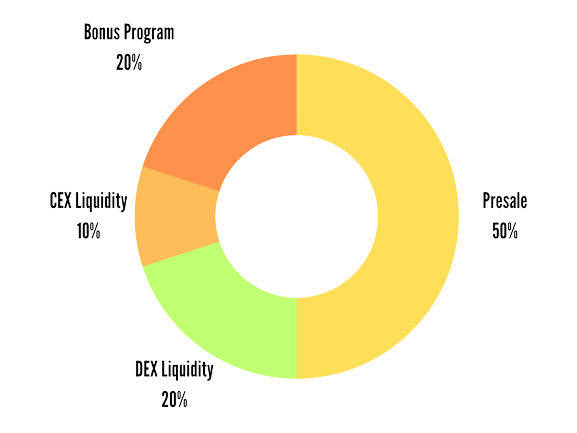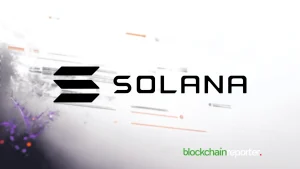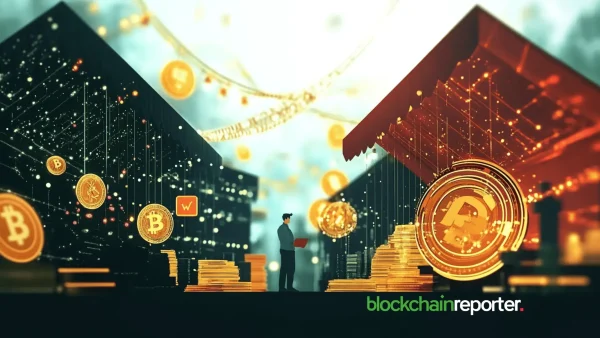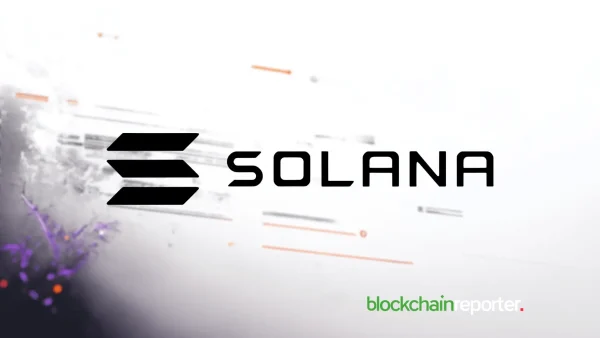
Pandoshi, drawing inspiration from Satoshi Nakamoto’s vision, is a project focused on decentralization, privacy, and financial freedom, echoing the original purpose of blockchain technology. It aims to be a leading example of community-led initiatives, giving control to its users.
The goal of Pandoshi is to create a network of decentralized products that work well together, including essential tools like a network, decentralized exchange (DEX), and wallet, which are vital for decentralized finance (DeFi) to reach its full potential. It also supports innovative projects such as decentralized virtual worlds and educational platforms.
The success of Pandoshi relies on a supportive community that values privacy and the freedom to manage their finances without interference. Everything created in Pandoshi is meant to benefit the community, offering economic advantages to users while avoiding middlemen, ensuring a truly decentralized experience.
Now that the presale has concluded and it’s about to launch on trading platforms, our Pandoshi price prediction offers investors an analysis of the current market mood and future PAMBO price foreasts.
What is Pandoshi?
At first glance, Pandoshi might look like just another meme coin, but it’s much more. It’s a comprehensive ecosystem that introduces innovative products and supports the growth of its native coin, PAMBO.
The Pandoshi ecosystem includes a Layer 2 protocol using Proof-of-Stake, a multi-chain decentralized exchange (DEX), a non-custodial wallet, KYC-free crypto prepaid cards, educational programs, freely distributed NFTs, engaging Metaverse games, and other features detailed in the project’s whitepaper. The native coin, PAMBO, has a total supply of 2 billion tokens, with only 1 billion circulating. It’s designed to be deflationary, benefiting from a buy-and-burn mechanism where revenue from products like the DEX and prepaid cards is used to buy back PAMBO tokens and remove them from circulation by sending them to a dead wallet. This process will continue until 80% of the circulating tokens are burned.
While PAMBO is deflationary, the project also introduces staking of the native coin without creating new coins, preventing inflation. Stakers receive a secondary token, BAMBOO, used for voting on project decisions or sold on the market. Once used, BAMBOO is also retired to a dead wallet. This collateral staking model rewards holders and maintains PAMBO’s value without inflating it.
Industry experts tracking the project point out that listing Pandoshi on major centralized exchanges like Coinbase and Binance will introduce it to their large user bases. With Coinbase having over 30 million active monthly users and Binance around 15 million, this move is expected to significantly boost demand for PAMBO tokens.
Roadmap of Pandoshi
The roadmap for Pandoshi is designed to first establish public awareness and a strong community, then focus on developing key features in order of importance.
Q4 2023 – Q1 2024:
- Develop and start selling PAMBO tokens.
- List PAMBO on major tracking platforms and launch marketing campaigns including puzzles and bonuses.
- Develop Cardoshi and Pandoshi University.
- Strengthen the community around PandaChain and PandoshiSwap.
- After the PAMBO sale, add the token to centralized exchanges (CEXs) and then decentralized exchanges (DEXs).
Q2 2024:
- Launch the Pandoshi Legion.
- Start developing PandaChain, aiming for a testnet by Q2’s end.
- Begin PandoshiSwap with initial trading pairs and continue PAMBO’s deflationary process.
- Initiate development of the Pandoshi Wallet, targeting a Q3 completion.
Q3 2024:
- Release PandaChain on the mainnet and expand PandoshiSwap to the native network.
- Finish developing the Pandoshi Wallet.
- Start creating a community-selected Metaverse game.
Q4 2024:
- Collaborate with leading companies inside and outside the crypto sector.
- Expand Pandoshi’s reach beyond existing crypto users.
- Launch official merchandise and explore payment options using Pandoshi tokens and prepaid cards.
- Continue enhancing PAMBO’s value through the buy and burn mechanism.
Pandoshi’s Offerings: Ecosystem
PandaChain
PandaChain is a cost-effective, Proof-of-Stake Layer-2 blockchain aimed at true decentralization for the Pandoshi community. It reduces PAMBO’s circulating supply by increasing the burn rate and lowers transaction fees across its network, making it the go-to platform for all official and community projects.
Using advanced technologies like the PolyBFT consensus mechanism and zkEVM for zero-knowledge proofs, PandaChain offers scalability and privacy. It supports ERC token standards such as ERC-20, ERC-721, and ERC-1155, making it versatile for various applications.
Unlike *ETH*, which suffers from high gas fees, PandaChain ensures minimal costs and fast transactions, costing just fractions of a cent. Users can become validators by staking PAMBO and earn rewards, and developers receive 30% of gas fees spent on their smart contracts, fostering growth within the ecosystem.
PandaChain’s efficiency is also boosted by technologies like StateSync and Checkpoints, which help maintain data accuracy and security across its network. With a decentralized structure, it distributes control across multiple nodes, enhancing network resilience and reducing vulnerabilities. The libp2p protocol underpins this system, ensuring robust and efficient node communication.
PandoshiSwap
PandoshiSwap is a decentralized crypto exchange (DEX) that lets you trade directly with others without a middleman, offering more privacy and security than centralized exchanges (CEXs). It avoids arbitrary bans on assets and will not add KYC requirements.
The exchange supports multiple blockchains and includes a built-in bridge for moving assets between chains. Trading fees are set at 0.3%, with 70% going to liquidity providers and 30% used to buy and burn PAMBO tokens. Once PandaChain launches, PandoshiSwap will become its primary DEX, supporting all ecosystem and community-created tokens.
Additionally, Pandoshi aims to create a peer-to-peer marketplace within the DEX for buying and selling crypto with fiat, sidestepping the need for CEXs and KYC processes.
Cardoshi
Cardoshi introduces a virtual prepaid card service that allows users globally to create and load virtual Visa/Mastercard prepaid cards using PAMBO tokens and other major cryptocurrencies, including stablecoins from various blockchains. These virtual cards support a maximum balance of $5000 and a daily spending limit of $2500, accepted by numerous merchants worldwide.
The service charges a modest 2% fee for card top-ups. Half of this fee (1%) goes towards buying and burning PAMBO tokens, enhancing the token’s deflationary mechanism.
Pandoshi NFT
Pandoshi will distribute 10,000 NFTs for free to its community as rewards. These will be awarded to members of the Pandoshi Legion, early holders, Pandoshi Puzzle winners, and others. The specific benefits of these NFTs will be revealed later. They are categorized into four tiers of rarity, each with its own unique utility.
Pandoshi Legion
The Pandoshi Legion, modeled after the ancient Roman Empire, is a community-driven group committed to promoting the project’s growth. It consists of various Cohorts, each assigned specific tasks like Marketing, Graphic Development, Technical Development, and more. Each Cohort elects a leader known as a Centurion, who manages the group’s activities, including setting goals, monitoring progress, and solving problems. The Centurion serves for one month, after which the Cohort can either re-elect the same leader or choose a new one. If necessary, the Centurion can be removed during their term through a community vote if they are not effectively managing their duties.
Each Cohort receives a monthly budget based on its contribution, importance, and efficiency, making the budget variable. Cohorts that perform well may receive additional funding as a reward for their effectiveness.
Pandoshi Wallet
In the ecosystem, a decentralized, non-custodial, and completely secure wallet is crucial. This wallet achieves its security by not collecting any user data, thus avoiding the data losses that are often exploited in hacks. The belief is that the best way to protect user data is simply not to possess it.
Initially, this will be an EVM-compatible wallet. Over time, it will expand to include non-EVM chains, prioritized by importance. Features such as an internal swap and bridge linked to PandoshiSwap, staking capabilities within the wallet, options for setting up recurring payments, and executing transactions without needing the native coin of the network are planned. Users will be able to pay with other assets they hold. These features, along with many others that are currently unavailable, will be gradually implemented.
Pandoshi University
Pandoshi University is an educational initiative designed to close the knowledge gap in cryptocurrency for new users while also promoting the PAMBO token. The university will utilize both synchronous and asynchronous learning methods to make crypto education accessible to everyone.
The university plays a dual role in relation to the PAMBO token:
- Educational Outreach: Pandoshi University aims to introduce the Pandoshi Ecosystem to a broad audience of potential new crypto enthusiasts who are expected to enter the crypto market in the coming years.
- Token Utilization: The PAMBO token serves as the primary utility token within Pandoshi University. While most educational content will be free, in line with Pandoshi’s goal to accelerate crypto education in the mainstream, certain special features of the university will require the use of the PAMBO token.
Pandoshi Puzzles
Pandoshi is enthusiastic about puzzles and logical games, which is why it plans to frequently organize events where the community can compete to win prizes like cash, PAMBO tokens, or NFTs. These puzzles will come in various forms but are designed to be inclusive, requiring no specific expertise—just your wit, problem-solving abilities, and occasionally a bit of research. Success in these events isn’t about luck or financial status; it’s a fair opportunity for everyone to compete on equal terms, without any advantages given by birth or chance.
Pandoshi Tokenomics
PAMBO is the native utility token of the Pandoshi ecosystem, used across multiple platforms such as PandaChain, the Metaverse Game, and Pandoshi University. It also plays a key role in the buy-and-burn mechanisms of PandoshiSwap and Cardoshi. As a deflationary asset, PAMBO will cease burning once 80% of the supply is removed from circulation. It can be acquired by purchasing or participating in official Pandoshi events.
Token Details:
- Name: Pandoshi
- Ticker: PAMBO
- Total Supply: 2,000,000,000
- Circulating Supply: To Be Announced
- Initial Offering Price: $0.01
- Blockchain: Ethereum (ERC20)
Governance Token: BAMBOO The ecosystem also includes a governance token, BAMBOO, which is inflationary with no supply cap and used by the community to vote on Pandoshi’s future. BAMBOO can be acquired through purchases on decentralized exchanges (DEXs) or via collateral staking of PAMBO. In this staking system, participants receive Shares proportional to their stake relative to the total staked PAMBO, affecting their voting power. Used BAMBOO tokens are removed from circulation post-voting.

PAMBO Distribution Phases:
- Stage 1: 50,000,000 PAMBO at $0.002
- Stage 2: 100,000,000 PAMBO at $0.004
- Stage 3: 200,000,000 PAMBO at $0.006
- Stage 4: 300,000,000 PAMBO at $0.008
- Stage 5: 350,000,000 PAMBO at $0.01
Distribution Allocation:
- Public Sale: 50% (1,000,000,000 PAMBO)
- Bonus Program: 20% (400,000,000 PAMBO)
- DEX Liquidity: 20% (400,000,000 PAMBO)
- CEX Liquidity: 10% (200,000,000 PAMBO)
This structure aims to maintain a balanced and growth-oriented ecosystem, with a focus on decentralization and community governance.
Pandoshi Price Prediction By Blockchain Reporter
According to Blockchain Reporter, there is currently no price data available to generate a price prediction for Pandoshi. Typically, a few hours of historical trading data are needed before a price prediction can be made. The accuracy of the prediction model improves with a larger sample of historical price data.
The price prediction for Pandoshi relies on historical PAMBO price data and the cyclical nature of the broader cryptocurrency market, which is influenced by Bitcoin’s 4-year halving cycle. It’s important to note that the prediction algorithm is adjusted for each coin’s specific traits, such as market capitalization and its relative position in the market.
As soon as the token launches on crypto trading platforms, we might be able to do a Pandoshi price prediction with in-depth analysis.
Conclusion
This project shows considerable promise, introducing several innovative ideas to the blockchain space. It boasts a deflationary asset and has advanced one of its products ahead of schedule, as outlined in the initial roadmap. This rapid progress has led to a swift increase in holders and nearly sold out the offering in just one month. Following this, we anticipate the conclusion of the presale and the subsequent launch on both centralized and decentralized exchanges.
Frequently Asked Questions
What is Pandoshi?
Pandoshi is a blockchain project inspired by Satoshi Nakamoto's vision, focusing on decentralization, privacy, and financial freedom. It features an ecosystem of decentralized products like PandaChain, PandoshiSwap (DEX), Cardoshi (crypto prepaid cards), and Pandoshi Wallet, supporting real-world decentralized finance (DeFi) applications.
What makes Pandoshi different?
Pandoshi combines a community-first approach with advanced blockchain technology, including a deflationary native token (PAMBO) and staking rewards without inflation. Its Layer 2 to Layer 1 migration, innovative products, and focus on decentralization set it apart.
What is PAMBO?
PAMBO is the native utility token of the Pandoshi ecosystem. It has a deflationary mechanism, where transaction fees and revenues are used to buy and burn tokens, reducing the supply. This process continues until 80% of the total supply is burned.
What is the Pandoshi roadmap?
2023-2024: PAMBO token sale, product development, and listing on exchanges. Q2 2024: PandaChain testnet launch and PandoshiSwap rollout. Q3 2024: PandaChain mainnet release and Pandoshi Wallet launch. Q4 2024: Partnerships, merchandise, and Metaverse game development.
How does Pandoshi support staking?
Staking PAMBO tokens provides rewards in BAMBOO, a governance token used for decision-making in the ecosystem. BAMBOO tokens are retired after use, maintaining PAMBO's value without inflation.
What are the main components of the Pandoshi ecosystem?
PandaChain: A scalable, low-cost Layer 2 blockchain with zkEVM for privacy. PandoshiSwap: A DEX with multi-chain support, liquidity pools, and a built-in bridge. Cardoshi: Virtual prepaid cards for easy crypto spending. Pandoshi Wallet: A secure, non-custodial wallet with advanced features. Pandoshi University: An educational platform promoting blockchain knowledge.
What is the PAMBO price prediction for 2025?
Pandoshi's price forecast will depend on market adoption, exchange listings, and ecosystem growth. Analysts expect significant growth if it captures user interest and implements its roadmap effectively. Historical data will provide better predictive insights post-launch.
Where can I participate in PAMBO token sales?
PAMBO tokens are available during presale phases and will be listed on major centralized and decentralized exchanges (CEXs and DEXs) following the sale.
How is Pandoshi governed?
The Pandoshi Legion and BAMBOO token enable community-driven governance, allowing members to vote on the project’s direction, budgets, and development priorities.
What sets PandaChain apart from Ethereum?
PandaChain offers lower fees, faster transactions, and a scalable Proof-of-Stake infrastructure, addressing Ethereum's high gas fees and scalability issues.
What are Pandoshi’s deflationary mechanisms?
Buy and Burn: Fees from PandaChain, PandoshiSwap, and Cardoshi are used to buy back and burn PAMBO tokens. Staking Rewards: BAMBOO governance tokens, earned through PAMBO staking, are retired after use.








